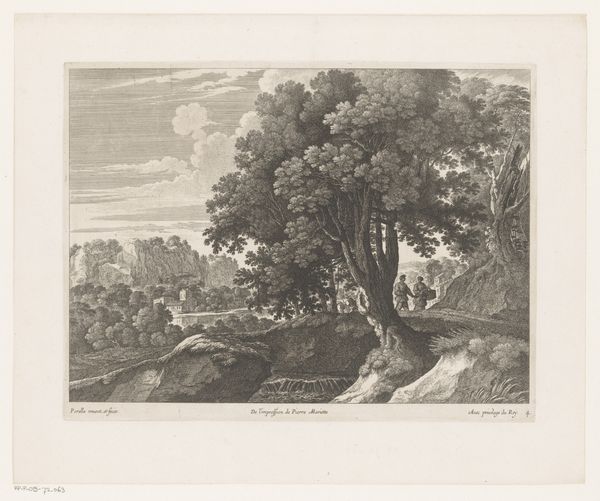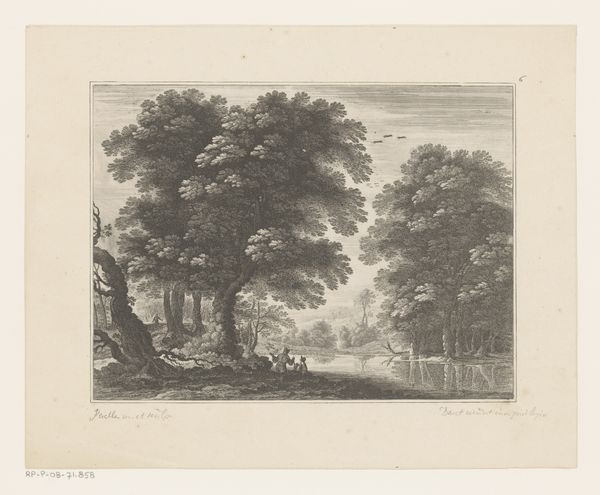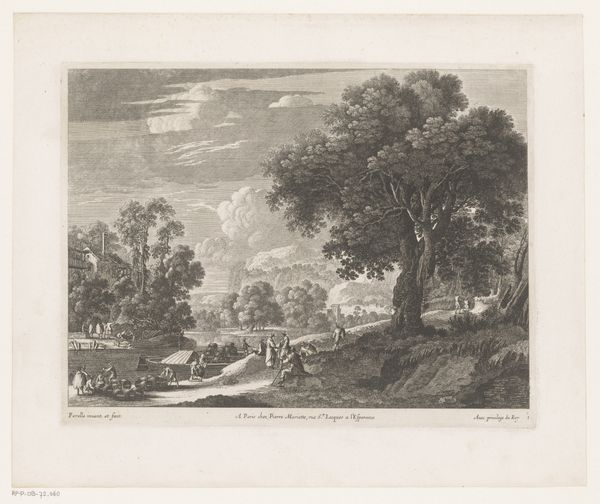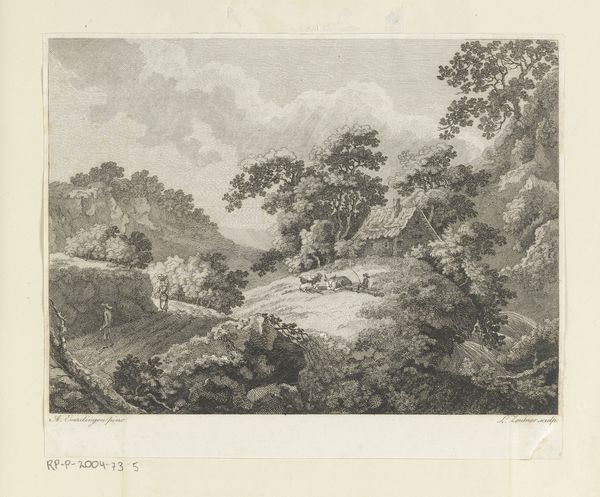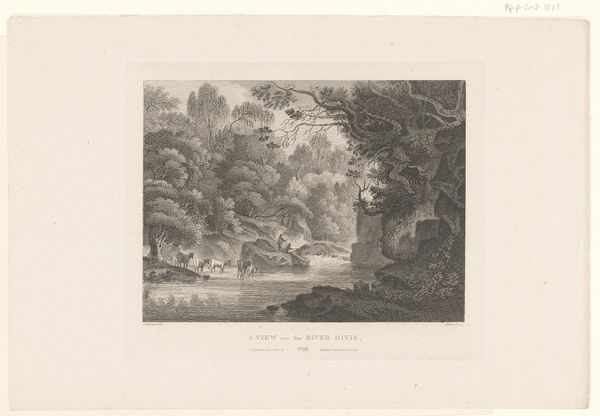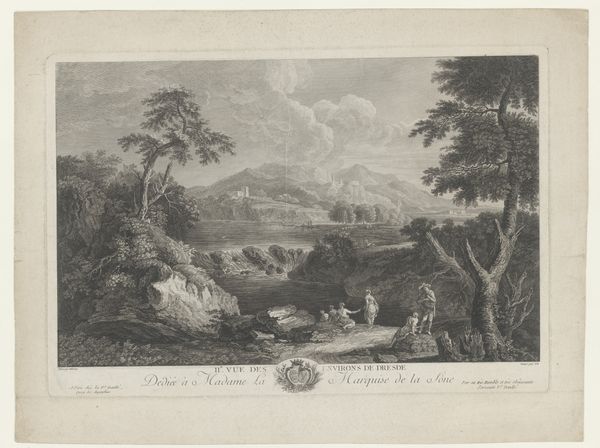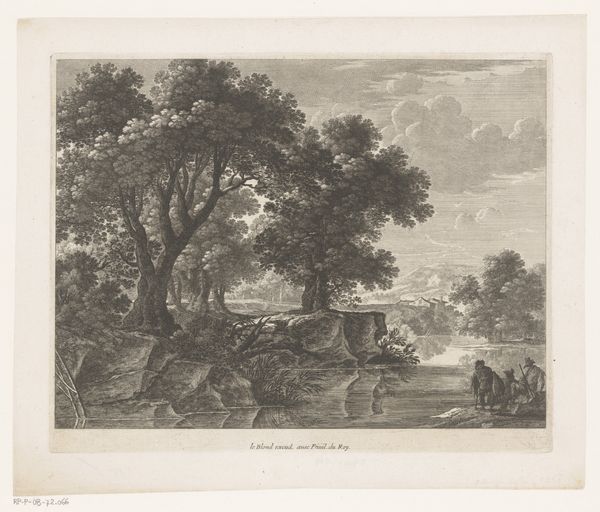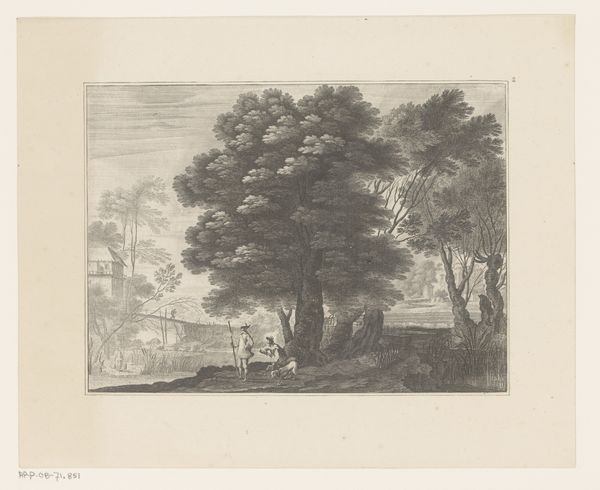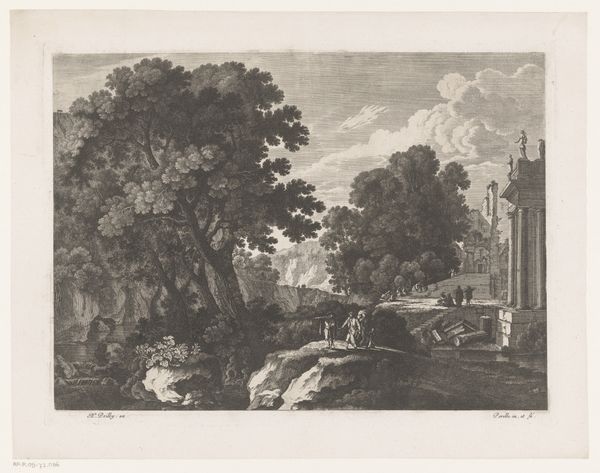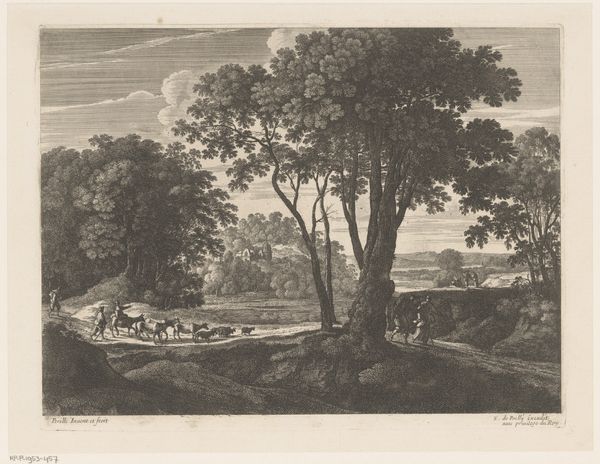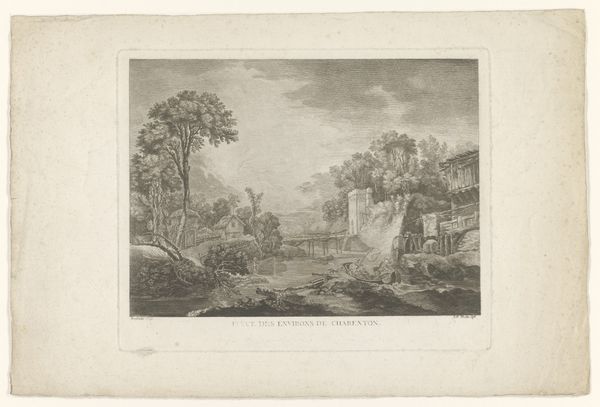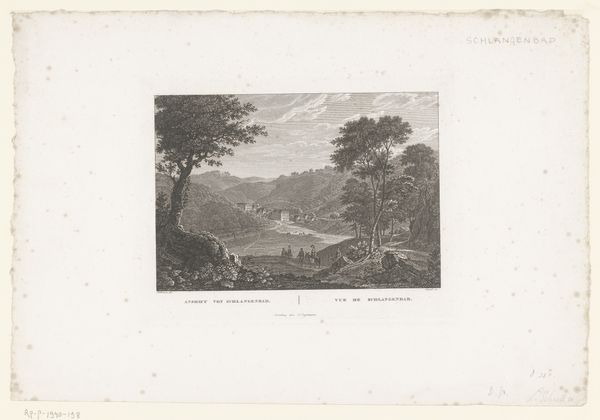
print, engraving
#
baroque
# print
#
landscape
#
river
#
engraving
Dimensions: height 243 mm, width 315 mm
Copyright: Rijks Museum: Open Domain
Curator: This print is titled "River Landscape with a Stone Bridge," created by Nicolas Perelle sometime between 1613 and 1695. It's currently held at the Rijksmuseum. The medium is engraving. What are your first impressions? Editor: Immediately, I’m drawn to the central tree. The density of the leaves is mesmerizing, like a gathering of thought. But it’s somber—a little melancholic, I think. The contrasts in light create a powerful mood, yet there's also a calmness from the scene. Curator: I find the interplay of nature and classical ruin significant here. We see figures on the road heading into a space where architectural order breaks down back into the organic world. It reflects ongoing anxieties about culture and its longevity amidst nature's enduring power. This echoes debates during a period of great societal and political change, revealing how deeply rooted themes of time and decay were embedded in early modern European thought. Editor: And the bridge itself! Bridges are such loaded symbols. Obviously connection—but also transition, the passing of time, the journey from one state to another. We are only granted partial sight, reinforcing ideas of transformation and unseen mysteries. Curator: Yes, it certainly suggests that journey. How does the perspective affect your reading? Editor: The vanishing point almost sits within that old stone structure that partially obscures the rest of the scenery. We might perceive that, too, as another symbol that carries associations of death and renewal in folklore across cultures. Notice that stark difference between light and shadow—suggesting transformation and change that leads to a final closure, or potentially the dawn of new perspectives. Curator: Given its potential historical reading, what impact would this piece have? It's a landscape print, but its narrative implications appear significant to the people and circumstances of that period. Editor: I am very struck by how timeless symbols intertwine in Perelle's print with its sociopolitical backdrop. The artist makes clever, thought provoking commentary by juxtaposing symbolic ideas. It would appear that way whether in 1650 or the modern day.
Comments
No comments
Be the first to comment and join the conversation on the ultimate creative platform.
